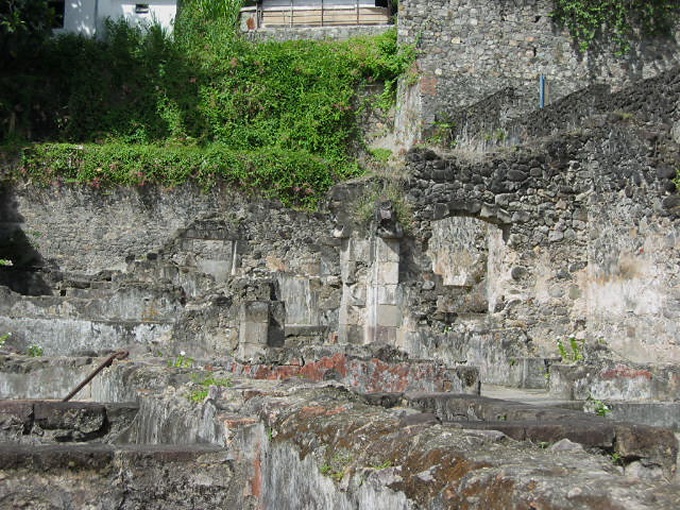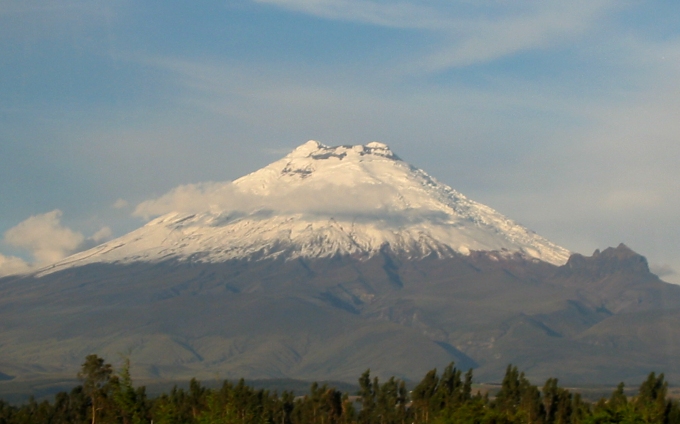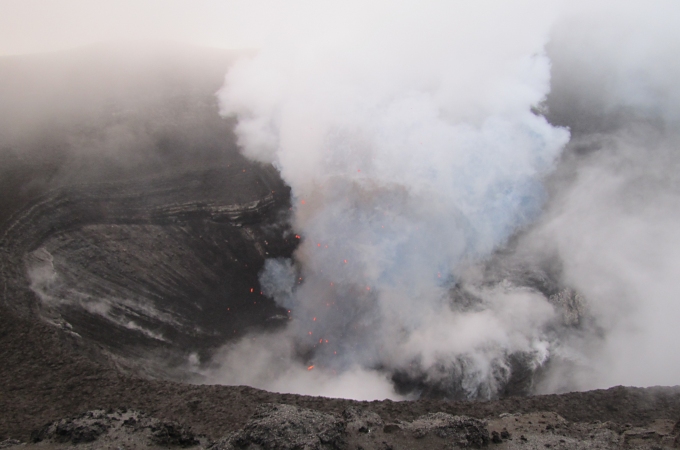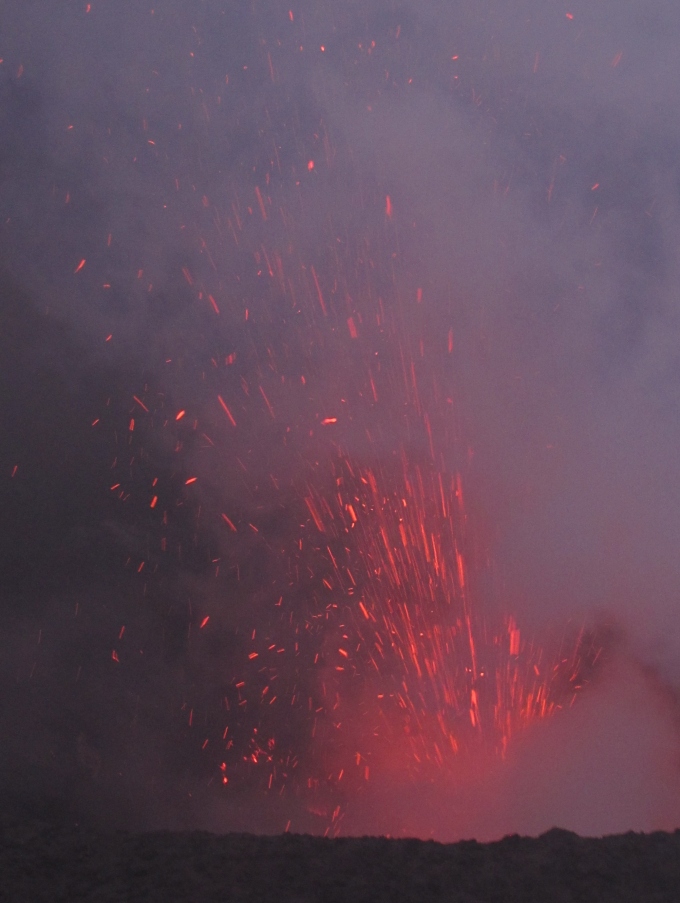Vesuvius Day - Standing on the Edge
/Today marks the anniversary of the eruption of Mount Vesuvius in 79AD. The Roman poet, Pliny the Younger wrote letters providing a good first hand account of the devastation and deaths caused when the mountain blew its top. I remember flying over Mount St Helens in Oregon in October 1986 as many small eruptions were occurring. From that safe distance miles high in the sky, it was interesting to view, but I never got any closer.
Then we started sailing and began getting first hand looks at volcanoes. A good many of the Caribbean islands are volcanic, part a mountain chain that extends along the sea floor. Approaching the island of Saba which juts suddenly out of the water, its peak surrounded in a mist of clouds, left no doubt as to its origin. When we visited St. Eustatius (Statia), we hiked to the bottom of The Quill, a huge volcanic crater. Arriving at Montserrat was totally different. Soufriere Hills Volcano was actively smoldering. We couldn't go ashore and had to make sure we anchored outside the designated exclusion zone. This was getting a bit closer to reality.
Martinique offered an excellent, up close view of the historical eruption of Mt. Pelee which totally destroyed St. Pierre, “the Paris of the West Indies” in 1902, killing most of its inhabitants and leveling the town. We wandered through the ruins which are marked with placards, many showing old photos of the “before” which we compared in amazement to the “after”we were seeing a hundred years later.
As we traveled in South America, volcanoes were quite common. In Ecuador, we took a bus through the Valley of the Volcanoes, south of Quito and viewed majestic Cotapaxi.
The alluring Galapagos Islands off Ecuador's coast are volcanic in origin and one of the most volcanically active places on Earth. We rode horseback on the Isla Isabela, trekked over stony rough aa lava beds for a view of calderas and fumeroles at Sierra Negra and explored lava tubes, sometimes on hands and knees.
Probably the closest and most dramatic encounter with a volcano, however, occurred fairly recently when we visited Vanuatu. One of the must-sees when visiting this South Pacific island nation is a stop at the island of Tanna to stand on the rim of Mount Yasur, the most accessible active volcano in the world.
A 4-wheel drive half-ton community-owned truck was our transportation from the local village to the volcano. The dirt track was rutted and almost non-existent in parts, but the driver knew his way and after about 20 minutes of jostling and bouncing, we arrived at the entrance to the park. As entry fees were paid and receipts written, we stretched our legs, took photos and heard the first roars of the volcano still many miles away.
Up, up, up the truck maneuvered along a track reminiscent of a Colorado 4-wheel drive back-country mountain pass. The truck labored as it negotiated deep ruts and steep inclines and finally deposited us about 150m from the rim of the volcano. Mount Yasur at 361m, is touted to be the world's most accessible active volcano with a crater some 300m across. At some point in time, the path up to the rim had a wooden railing, but it was rickety and in pieces now, more of a hindrance than a help. We clambered up the ash and cinder slope and there we were...looking down into the smoke and sulphurous vapors of Mount Yasur's 100 meter deep crater. We were the only ones up there and we tenuously chose our steps along the rim to the best vantage point.
There are few rules associated with the visit. No one tells you not to stand too close to the edge. There are no guard rails or worries about lawsuits here. You're pretty much on your own.
As if to announce its mighty presence, the volcanic rumbling escalated to a sustained, earsplitting roar that startled us all and had us jumping back and ducking for cover. Huge molten rocks and glowing cinders spewed up into the air far over our heads as we watched the show. The roaring barely subsided when another blast began. We could actually see the shock waves before we heard the thunderous explosions. Blue roiling vapors escaped and mixed with white steam and thick brown smoke. Once the sun set, the spectacle was even more dramatic. For nearly three hours, we watched and heard a continuous, deafening display of fireworks that far exceeded any man-made pyrotechnic display we've ever seen.
Sometimes the smoke and sulphur fumes were so thick, they nearly choked us and we had to walk away to catch our breaths and wipe our eyes until the wind shifted. All around us huge volcanic boulders that had been spit out in the past lay about haphazardly. We remembered the words of our guide, Stanley, who had instructed us that if we saw a molten boulder heading our way, we should stand still, watch its trajectory and try to dodge it. Hmm! Everyone knows this volcano is bound to blow one day. What are the odds it would be tonight? Is this an experience that would even be allowed in most parts of the world? We could see the headlines now..."Idiot tourists flattened by giant volcanic rock while standing on rim of active volcano".
This rates right up there with one of the most memorable experiences of our travels. Happy Vesuvius Day!









